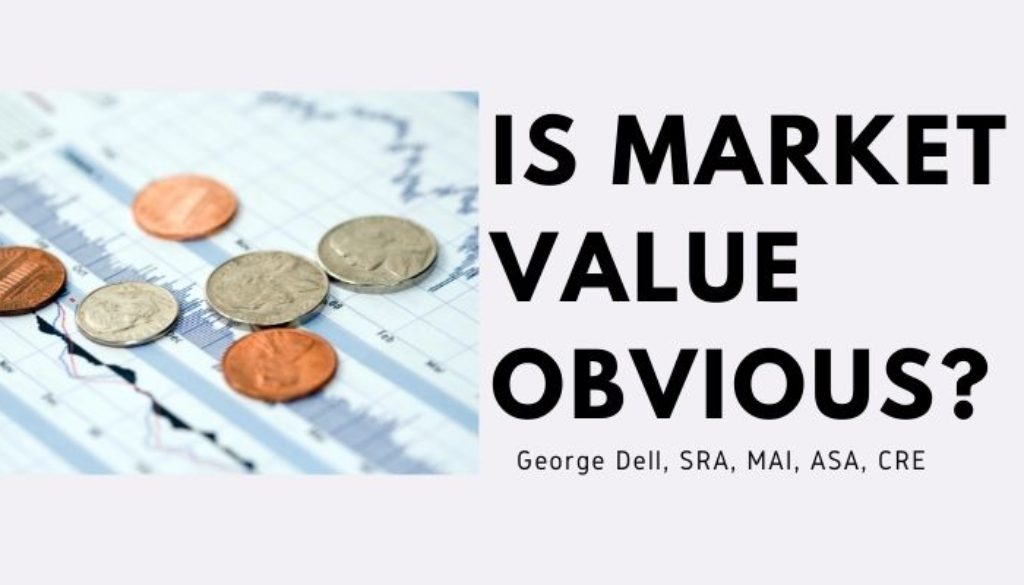Is it “Obvious”, like some people have “common sense”? Or is it counter-intuitive?
We compared price versus value in Part I. (There, the leading paragraph defines “market value” as per USPAP Advisory Opinion 22.) The Appraisal Foundation opinion goes on for a full page to explain the explanation of the definition, and the importance of the definition of the concept and its source.
In this Part II, we address this concept: “Market value means the most probable price.” Obvious
“Price” is defined as the amount of money paid for a given product or service. Economic price theory says price reflects the interaction of supply and demand in a free market economy (amongst other things).
It appears our common ‘appraisal’ definition of value equates market price to market value. This may be a problem . . . Market value and market price are only equal within specific circumstances.
- The market is efficient;
- There is an equilibrium (as between supply and demand); and,
- Participants have rational expectations.
The efficient market hypothesis states that asset prices reflect all available information. As such, this forms the basis of the risk-model logic. In other words, the risk arrives from incorrect or unavailable (such as future) information.
Equilibrium in economics is when supply and demand are balanced. The ‘balance’ can be either static or dynamic. Static means at a point in time. Dynamic means evolving through time. Static price prediction assumes a fixed condition, while dynamic price prediction comprises prior and forecast predictors.
Rational expectations means that participants (buyers, sellers, agents, lenders, regulators) understand the model itself, and expect its general outcome.
As we look at these three requirements (for value to equal price), it is clear that for almost all market areas, efficiency is only partial. Information about particular properties is actually pretty good. We know the key parts: the property type, transaction terms, time, location, and important features (such as living area, income/expenses, and site area). What is inefficient is that most static market information is limited. There are few buyers and few sellers. And every property is itself differentiated from every other property.
When you have just one seller, or one buyer – it is called a monopoly. More commonly, we have a handful of producers and customers for specified produces. This is called oligopoly. Problem: this precludes the assumption of equilibrium. It becomes more a matter of who has more market power or market dominance. Even inferior goods (such as some software) can continue to dominate markets just because of familiarity, a large marketing budget, and even habit. In such cases the market is not efficient. While full information may be available to competitors and to consumers – it does not matter. Monopolistic/oligopolistic tendencies overwhelm good information.
Equilibrium in such cases does not equal a free market economy. It is something different. Obvious
As far as rational expectations are concerned – participants simply play rationally in a not-rational, free-market based pricing situation. So – market value does not equal market price.
One last thought: an easy solution is always “the government must do something about this!” As we have seen in the market for valuations: Appraisers carry the financial burden of regulatory licensing, approvals, and dues, fees, and taxes. Non-appraiser competitors do not carry this ‘tax’. The ‘gold standard’ of valuation is taxed and burdened, while non-appraiser valuation products are subsidized.
